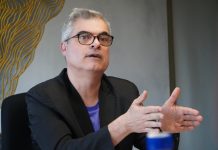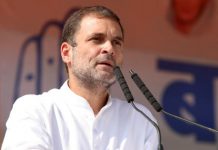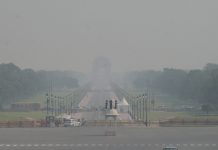
Who is killing whom in today’s world order? Just hours before US made the final exit from Afghanistan, 10 Afghan kids died in Kabul in American drone strikes in and around residential areas.
Come September and the ground realities are only getting messier! Monsoon rains are complicating the already dismal scenario. Whilst the Coronavirus is still hovering around, there are reported cases of Dengue-related deaths in and around Uttar Pradesh. To be spreading to the capital city and far beyond. After all, mosquitoes cannot be perished by political speeches of the rulers of the day! Broken roads, open drains, overflowing nallas and flooded intersections and subways are adding to the woes. Why wouldn’t the mosquitoes breed and over-breed in these highly developed times. Well such developed times that no destruction of mosquitoes breeding all around us, killing us so very systematically.
Those of us who have till now survived the viruses of all hues, could be in for another shocker! The New Delhi-based Jawaharlal Nehru University is introducing a course on“Jihadi terrorism” and State-sponsored terrorism. According to news reports, the course states that “Jihadi terrorism” is the only form of “fundamentalist-religious terrorism”, and that Communist regimes in the erstwhile Soviet Union and China were the “predominant State-sponsors of terrorism” that influenced “radical Islamic States”.
What’s going on? Why link a particular religion to terrorism? Why add to the mischievously-churned communal unleash-cum-propaganda to a particular faith? Also, who exactly is a terrorist? Who is killing whom in today’s world order? Who is terrorizing? In fact, in the last one week, dozens of Palestinians, including children, have been killed in Palestine by the military might of Israel. Not to overlook the hitting fact that just hours before Americans made that final exit from Afghanistan, 10 Afghan children were killed in Kabul in American drone strikes in and around residential areas of Kabul.
Getting back to our country, why don’t we focus on right-wing terror. For the last few years right-wing terror attacks are on the rise. And except for activists and a section of the media, nobody seems to even talking of these ongoing terrorizing tactics by the right-wing lobbies.
In fact, if you want to grasp the details to right-wing terror, it is essential to read books authored by the former IG Police of Maharashtra, SM Mushrif. This Pune-based cop’s previous books include ‘Who killed Karkare?’ and also ‘26/11 Probe: Why judiciary also failed?’ , but his one book which focusses very directly on terrorism and terror attacks taking place in the country is titled – “Brahminists bombed, Muslims hanged” (Pharos Media) .
Launched two summers back, this book is laced with facts and figures related to the bomb blasts taking place in the recent years. To quote Mushrif from his book: “The terrorism history of India in the 21st century is apt to be divided in two periods: pre-Hemant Karkare and post-Hemant Karkare. Before the Maharashtra Anti-Terrorism Squad (ATS) chief Hemant Karkare appeared on the scene, it was all about ‘Muslim terrorism’, barring only the self-revealed Nanded (Maharashtra) blast case of 2006 involving the Rashtriya Swayamsevak Sangh (RSS ) and Bajrang Dal terrorists, which however was treated as a one-off case and promptly relegated to oblivion. Prior to Karkare, the pattern of bomb blasts and their investigations was set. Brahminist organizations like the Abhinav Bharat, RSS, Bajrang Dal, Jai Vande Mataram would carry out bomb blasts in important cities across the country and the Intelligence Bureau (IB) with the help of the ever-compliant media would promptly blame them on Muslims. The State anti-terrorism squads, which were at the beck and call of the IB, would implicate innocent Muslim boys in the cases and the Brahminist elements in the media would give wide publicity to the stories trotted out by the IB and State anti-terrorism squads, thus creating an impression that all blasts were being carried out by Muslims. What was more, they were successful in convincing the general public that the blasts were the result of Muslim reaction to the Babri Masjid demolition and the 2002 Gujarat carnage; so much so that even some Muslims and secularists started believing that the blasts could be the handiwork of some highly radicalized Muslim boys.
To quote him still further, “This pattern continued till 2008. In September that year a bomb blast took place at Malegaon (Maharashtra). The ATS chief, Hemant Karkare, while investigating the case refused to obey the IB’s diktat. He carried out the investigation independently and honestly and exposed the Brahminists’ nationwide anti-national conspiracy. He did not stop at that. He made up his mind to get to the root of it, bust the plot completely and show to the world the face of Brahminist terrorism.
****
Getting back to this new controversial course, it would be apt to state that to introduce this course is totally uncalled for. It would only widen gaps between communities and further result in communal poisoning spreading out.
As the well- known New Delhi based sociologist Professor Imtiaz Ahmad had commented during the course of an earlier given interview to me, “The term Islamic terrorists is a misnomer and should be avoided, as it is used by vested political interests in India to drive a wedge between Hindus and Muslims.” He had also stressed on this vital fact, “It is not that many more Muslims are turning militants. Worldwide there are many other forms of militancy and terrorism that are equally aggressive and widespread. Within the South Asian region, we have had terrorism in Sri Lanka and Nepal. Further away, there are also Muslim militants who are fighting against regimes which are wholly or largely Muslims. It is ironic that following September 11, the world seems to have forgotten that there are these other terrorists. This is partly because the US-led war has put the focus on Muslims and partly because Muslims are more widespread, so the impression is gaining ground that more and more Muslims are turning into terrorists. Actually more and more people in the entire world are turning terrorists.”
And the late Mumbai-based academic Asghar Ali Engineer had this to comment when he was asked ‘why” Muslims are turning to terror activities. “It’s important to analyse the reasons behind the terrorist attacks. The fact is that there are extremist fringe groups in each community and in each country. But there wasn’t that hue and cry when Tamil rebels indulged in violence in Sri Lanka or when Irish rebels did the same in the UK. These acts of terrorism are political and are not religious.” On why Islam, the religion, is getting linked to violence, he gave examples to prove the contrary. Focussing on the period of early Islam, he detailed that the Prophet discouraged violence, and he showed compassion even to his enemies, so much so that when he had conquered Mecca, he pardoned all those who attacked him and his men. “He even pardoned a woman who had not just killed his uncle but even chewed his liver. One instance after another where forgiveness and compassion prevailed. Violence has been totally discouraged in Islam, except in cases of self-defence.”
****
One of a kind
Tabiba Ummul Fazal – one of the prominent women Hakims of the country passed away last week in New Delhi. She was the vice-president of the All India Unani Tibbi Conference (a think tank of Hakims). She was also appointed as a consultant by the WHO in the field of traditional medicine in1993. She wrote and edited a number of books on Unani medicine including “The concept of birth control in Unani medicine,” and “A handbook of common remedies in Unani System of Medicine (Central Council for Research in Unani Medicine/ CCRUM).”
Tabiba Ummul Fazal, the first woman graduate in her family, completed her Unani degree from the Aligarh Muslim University and went on to establish a niche for herself in independent India, in a career path that was unusual for women of her generation. She had initially joined the Hamdard Dawakhana. Later, she went on to join the Central Council for Research in Indian Medicine and Homeopathy, Ministry of Health and Family Planning, Government of India (GoI) (1970). Subsequently, she went on to become the Deputy Director of the Central Council for Research in Unani Medicine (CCRUM), under the Ministry of Health & Family Welfare and also officiated as its Director.
Its absolutely amazing to know the various aspects and details to her dedication to her profession. Space constraints come in way in writing many more details to her research and work and findings in the field of Unani medicine. In fact, her daughters, academic Azra Razzak, and poet-author Bushra Alvi Razzak should write a book on their mother. It would be one of those biographies to be widely read.
Exploring untapped rural potential
The well-known writer, Sahan Ahmad has taken over as president, Rural Tourism Council WICCI (Women’s Indian Chamber of Commerce and Industry). I wasn’t quite aware of the fact that there existed a specific field called ‘Rural Tourism’. Got to know of it and the various aspects to it quite recently after the well-known writer Sahana Ahmed took over as the National President of the Rural Tourism Council WICC. She detailed that it is an initiative of WICCI (Women’s Indian Chamber of Commerce and Industry).
Sahana and her team are already in that get-set mood, reaching out to our citizens in the rural belts, by promoting tourism in those belts. She has come up with a long list of recommendations to the Ministry of Tourism, Govt of India. Space constraints come in way in detailing these very significant recommendations, so I am putting down only a couple of them: Travellers need to be educated on the local cultures to which they need to adhere. Any tourism intervention must stay authentic to the community’s place on earth and its unique history, culture and resources. Development of infrastructure at the rural level must be strengthened, especially internet connectivity and power. Creation of one single platform where all information is available.
In fact, after getting to know from Sahana all the finer details to Rural Tourism, I’ve been amazed by its potential. If it picks up, our fellow citizens residing in our villages and qasbahs could benefit and there wouldn’t be any need for them to be uprooted, from the rural stretches to the urban cities.
Sarojini’s stirring verse
In the backdrop of the controversy around the recent renovations at the Jallianwala Bagh, it gets significant to read aloud these lines of Sarojini Naidu (Jallianwala Bagh- Literary responses in prose & poetry. Introduced and edited by Rakhshanda Jalil. Published by Thornbird – An imprint of Niyogi Books).
They relay the sheer intensity of the pain of that brutal massacre of our countrymen at the site:
How shall our love console thee, or assuage
Thy hapless woe; how shall our grief requite
The hearts that scourge thee and the hands that smite
Thy beauty with their rods of bitter rage?
Lo! Let our sorrows be thy battle –gage
To wreck the terror of the tyrant’s might
Who mocks with ribald wrath thy tragic plight,
And stains with shame thy radiant heritage!
O beautiful! O broken and betrayed!
O mournful queen! O martyred Draupadi!
Endure thou still, unconquered, undismayed!
The sacred rivers of thy stricken blood
Shall prove the five -fold stream of Freedom’s flood,
To guard the watch -towers of our Liberty.
Going by the reported cases it wouldn’t be
tehelkaletters@gmail.com













